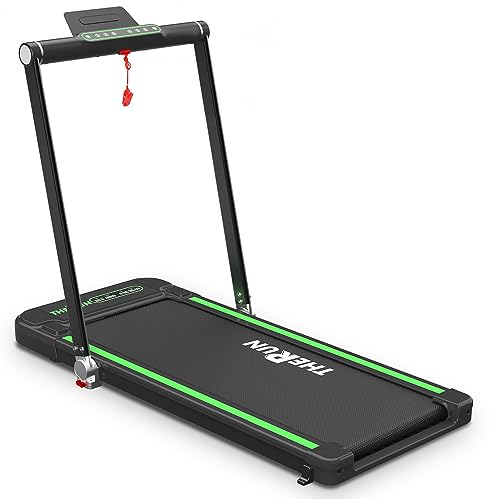
Treadmills
Add a review FollowOverview
-
Founded Date October 9, 1944
-
Sectors Software Engineering
-
Viewed 9
Company Description
Ten Treadmills That Really Improve Your Life
The Comprehensive Guide to Home Treadmills: Everything You Need to Know
With an increasing focus on fitness and health in today’s busy world, home treadmills have become a popular choice for those looking to instill routine workout into their regimens. Whether for visual improvement, convenience, or physical fitness tracking, treadmills offer a versatile solution for numerous fitness lovers.

This short article explores various aspects of home treadmills, providing insights into their functions, advantages, and necessary factors to consider for possible purchasers. It also addresses common concerns and misconceptions about these workout machines.
Tabulation
What is a Home Treadmill?
A home treadmill is a fitness device created for running or walking while remaining in one place. Unlike conventional running outside, it enables individuals to exercise in the convenience of their homes. Treadmills can be powered by electrical energy or can be manual, needing the user to propel the belt with their own effort.
Advantages of Having a Home Treadmill
The advantages of owning a home treadmill are numerous. Below are some key advantages:
- Convenience: Users can exercise at any time, avoiding weather restraints or gym schedules.
- Time Management: Reduced travel time to and from a gym, permitting for quicker workouts.
- Personal privacy: The comfort of working out in a personal environment, perfect for those who feel uncomfortable in public settings.
- Flexibility: Adjustable speeds and inclines deal varied workout choices, accommodating different physical fitness levels.
- Combination with Technology: Many modern-day treadmills come geared up with physical fitness apps and tracking systems that keep track of development.
Kinds Of Home Treadmills
Home treadmills can be categorized into a number of types, each serving different needs and preferences:
| Type | Description |
|---|---|
| Motorized Treadmills | Electric motors that permit users to adjust speed and slope with push-button controls. |
| Handbook Treadmills | Needs physical effort to move the belt, normally more compact and portable. |
| Folding Treadmills | Space-saving designs that can be folded when not in use. |
| Treadmill Desks | Allow users to stroll while working, integrating physical fitness into their daily tasks. |
Selecting the Right Treadmill
Think about these aspects when choosing the proper kind of treadmill for individual use:
- Space Requirements: Ensure the treadmill fits conveniently in your designated workout area.
- Consult Reviews: Look at user feedback and professional evaluations to understand performance and reliability.
- Budget plan: Set a clear budget, as rates can vary extensively.
- Use Frequency: Assess how frequently the treadmill will be used to determine resilience and functions required.
Key Features to Consider
When shopping for a home treadmill, it’s important to assess specific features that improve the workout experience. Particular functions to focus on consist of:
- Motor Power: Look for a motor with at least 2.0 CHP for trustworthy performance.
- Running Surface: A bigger running surface area is more suitable, particularly for those who desire to run or take longer strides.
- Slope Options: Adjustable slopes increase workout strength and aid engage various muscle groups.
- Cushioning System: Good shock absorption can significantly reduce the effect on joints and prevent injuries.
- Innovation Integration: Built-in heart rate displays, Bluetooth connectivity, and incorporated exercise programs can enhance your fitness journey.
Upkeep Tips for Your Treadmill
A well-kept treadmill can last for several years. Regular maintenance is vital to making sure optimum efficiency. Consider these upkeep tips:
- Keep It Clean: Wipe down the surface regularly to eliminate dust and sweat.
- Lube the Belt: Apply silicone lube according to manufacturer standards to reduce friction.
- Look for Wear and Tear: Regularly inspect the belt and deck for signs of damage or extreme wear.
- Inspect the Motor: Clean dust from the motor area and guarantee appropriate ventilation to avoid overheating.
- Follow User Manual: Always refer to the user manual for specific maintenance directions related to the model.
FAQs about Home Treadmills
1. Are home treadmills efficient for weight-loss?
Yes, home treadmills can be very effective for weight reduction if utilized regularly as part of a balanced diet and physical fitness routines.
2. How much area do I require for a treadmill?
While it differs by model, a common home treadmill will need a minimum of 6.5 feet in length and 3 feet in width.
3. Do I require unique shoes to use a treadmill?
While special shoes aren’t required, buying great quality running shoes can assist avoid injuries and improve comfort.
4. Can I view TV or listen to music while using a treadmill?
Absolutely! A lot of modern-day treadmills have features that permit users to see TV or listen to music through integrated speakers or via Bluetooth connections.
5. How long should I utilize a treadmill each day?
For optimum health benefits, go for a minimum of 30 minutes of moderate-intensity exercise on the treadmill most days of the week.
Owning a home treadmill opens the door to convenient and versatile workouts suitable for people of all skill levels. Understanding the different types, important features, and correct upkeep can help make sure that your financial investment remains effective and satisfying. As physical fitness ends up being a concern for numerous, home treadmills provide an excellent opportunity for personal health and health, making it simpler than ever to incorporate exercise into life.
With the best resources and guidance, a home treadmill can end up being a vital part of one’s fitness journey, helping individuals attain their objectives in a sustainable way.

